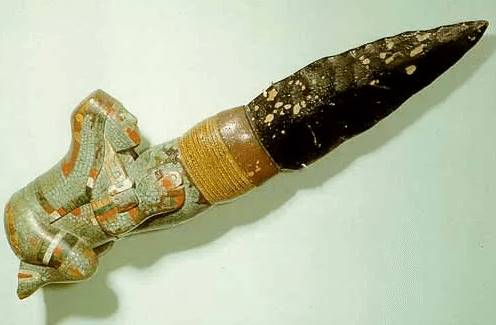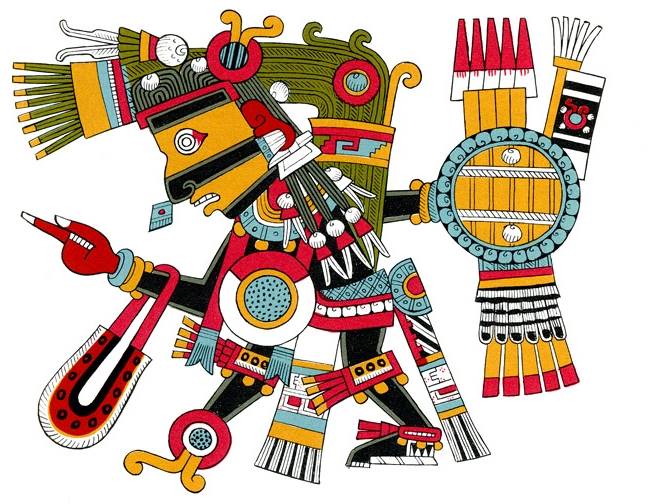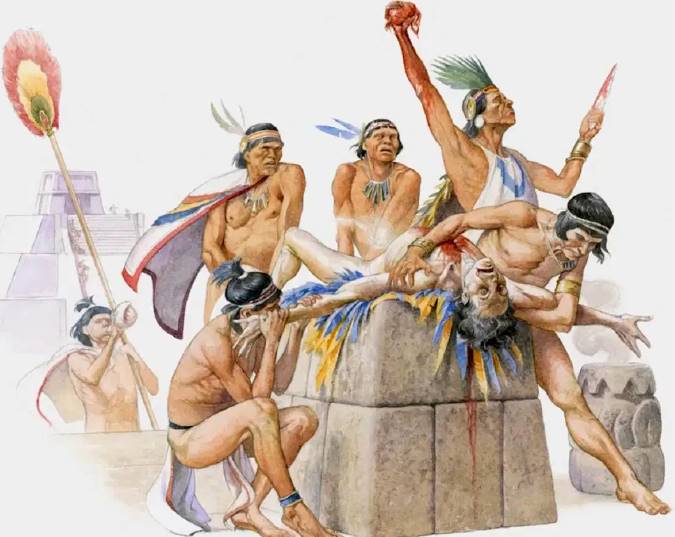- Aztec sacrifice, The reason
- Process for a Successful Sacrifice (It's Irony)
- Aztec Heart Sacrifice: A Calendar of Blood and Rituals
- Aztec gods who worshipped the heart sacrifice
- The visual and artistic legacy of the sacrifice
- Spanish people's amazement at the sacrifices
- Archaeological evidence today
- Conclusion
Imagine for a moment the scene, somewhere between a play and a horror movie: The blazing midday sun illuminating an imposing temple, a chorus of drums beating out a frenetic rhythm, and a group of priests carrying their “guest of honour” to the top to perform an act that would make the most hardened gore lover blanch. This is not Hollywood, this is the civilization of ancient Mexico: The sacrifice of the Aztec heart, a show so gory it left the gods satisfied and the crowds… well, with divided opinions.
Aztec sacrifice, The reason
For the Aztecs, ripping out a person’s heart was not just a brutal act, it was their version of “I give you something so that you give me something” with the gods. The logic was simple: the gods maintained the universe, but they needed a little energy to keep them from resting on their laurels. The solution? Offer human hearts as rechargeable batteries. So, from time to time, they organized these rituals to ensure rain, harvests, and prosperity.

The philosophy of sacrifice Aztec Heart Sacrifice
According to the Aztec legend of the Five Suns, the gods were not only omnipotent, they also had a great sense of sacrifice. Several of them gave their lives so that humanity could exist, and the Aztecs, deeply grateful, decided that the best way to return the favour was… well, to follow suit. So they instituted human sacrifices as a system of “eternal graces”.
It was his way of saying, “If you gods put your lives on the line for us, the least we can do is return the gesture. Fair enough, right?”.
Process for a Successful Sacrifice (It’s Irony)
First, the victims were selected with more care than the casting of a Netflix series. Generally, they were prisoners of war, although slaves or, in some cases, children were also included. Then came the procession: stripped of their clothes and with a look that said “yes, this will not end well,” the victims climbed the steps of the temple, escorted by priests.

A sharp tradition and a beating heart
At the top, the priests would go into action. One held the victim, another held the obsidian knife (think scalpel, but much sharper) and finally the head priest would do his thing: open the chest, extract the heart and lift it triumphantly while it was still beating.
Obsidian Blade: Tool of the Aztec Heart Sacrifice
This is small, but lethal contraption was not only sharp, but also elegant. Designed to cut with a precision that would make any modern chef weep with envy, it ensured that the heart was extracted in a condition fit for the gods. For more details you can consult: List of Aztec weapons.

Aztec Heart Sacrifice: A Calendar of Blood and Rituals
Aztec human sacrifices were carried out on specific days, holidays, so to speak, only with fewer gifts and more bloodshed.
In a single year, there are 18 of these “public holidays”.
- 5 of the 18 would require child sacrifice.
- 11 of the 18 would require heart removal.
- 2 of the 18 would require someone to use the meat of the lucky sacrifice.(¡¡eww!!)
- Of the eighteen sacrifices, four must be beheaded.
- 2 of the 18 require that the sacrifice be burned alive.
- 1 of the 18 requires that the sacrifice be drowned.
- 1 of the 18 requires the sacrifice to starve to death.
- 1 if the 18 demands that the body of the sacrifice be eaten.
- The final event, in the last month of the year, requires everyone to fast for five days. No one is sacrificed. Amazing, isn’t it?
Postponing the Apocalypse Every 52 Years
Within the 18 ritual events of the Aztec calendar, one stood out as truly extraordinary. Taking place every 52 years, this event was called the Ceremony of the New Fire. The purpose? To prevent the universe from collapsing. For the Aztecs, the gods needed to recharge their energies to sustain all that exists, because, apparently, being divine is exhausting. The solution? Yes, you guessed it: a heart-extracting sacrifice.

In this ceremony, a human life was offered as cosmic, a small reminder to the gods that the Aztecs were investing in “universal maintenance”. After the sacrifice, they would stay up all night, anxiously awaiting the rising of the sun. If the sun deigned to appear at dawn, it was a sign that the world would keep turning… at least for another 52 years.
Aztec gods who worshipped the heart sacrifice

Tezcatlipoca
The chief of chiefs and the most feared god of the Aztec pantheon, Tezcatlipoca, was no joker. He was the god of darkness, chaos, and the specialist in ruining lives. He was not merciful, although he had the power to be…
Their ritual of sacrifice was disturbing: choose a child who, for a whole month, became the mini-Tezcatlipoca. He was given everything, including four women, to accompany him, because, of course, a child of that age surely knew how to handle such a situation. At the end of the month, the child was sacrificed.
Xiuhtecuhtli
The god of fire and time. His rituals begin with food, which sounds good. But don’t be fooled, because after dinner comes dessert: Captives with their hearts ripped out and burned. Mind you, the Aztec gods seemed to have a fixation with hearts.


Xipe Tótec
The god of spring and fertility had a very peculiar method to symbolize the renewal of the earth: skinning the victims. Yes, tearing off their skins. All in honour of the corn cycle, because what better way to celebrate the harvest than with a particularly bloody sacrifice?
Tláloc
The god of rain had a special weakness for children. For good harvests, child sacrifices were offered. In his divine logic, the sacrifice of children guaranteed green and abundant fields.

Aztec mythology did not mince words; their gods demanded sacrifices that made it clear that, if you wanted blessings, you had to pay a price… a rather high one.
The visual and artistic legacy of the sacrifice
The Aztecs not only practised these rituals, they also documented it in their codices, paintings, and sculptures. The artistic depictions show scenes of sacrifice with a level of detail that would make Quentin Tarantino himself blush. From priests holding beating hearts to victims in postures of dramatic resignation.



Spanish people’s amazement at the sacrifices
In 1521, when Hernán Cortés and company disembarked in Mexico with the air of staying — because, of course, who needs an invitation — they came across something that made their hair stand on end: evidence of human sacrifices everywhere. And we are not talking about a clue here and there, but a quantity worthy of filling bookshelves with reports, books, and horror novels. The walls themselves whispered in their ears, adorned with paintings depicting these ceremonies as if they were the pre-Hispanic equivalent of “it’s Tuesday, it’s ritual time”. The big question that kept hanging over their heads, between crosses and chills, was: but… why?”
Archaeological evidence today

Finding evidence of Aztec human sacrifice is as easy as strolling through Mexico City. Near the ancient temples, there are hundreds of skulls and bones, as if they were souvenirs. And the curious thing is that the Aztecs did not try to hide it. On the contrary, they seemed quite proud of their… Dedication? There’s something to be said for a civilization that made human sacrifice its hallmark, though whatever there is to say is probably not a compliment.
Conclusion
The Aztec heart extraction sacrifice was an act as brutal as it was meaningful. In a world where survival depended on keeping the gods happy, these ceremonies were a key part of ensuring cosmic balance. Today, it is difficult for us to understand how something so grisly could be considered natural, but in the context of the times, it was a sacred and vital tradition.




Pingback: Aztecs Slavery: A Singular (and a Bit Peculiar) Reality